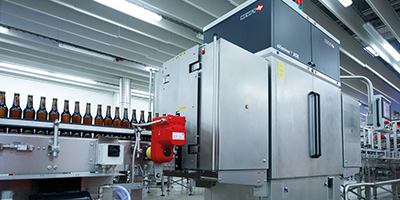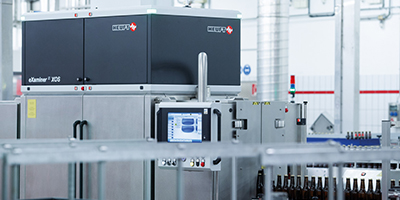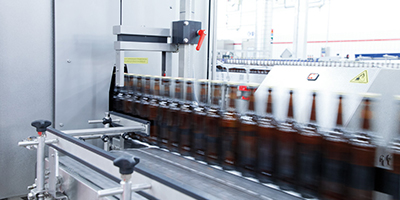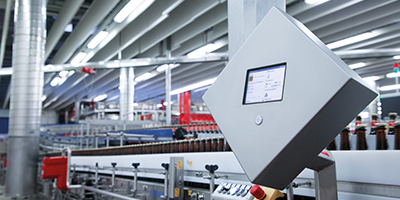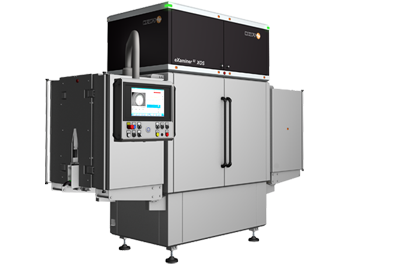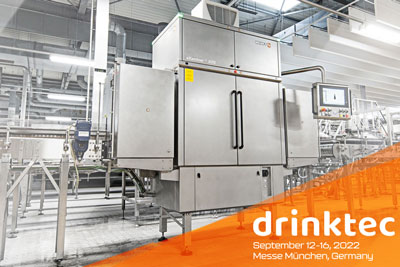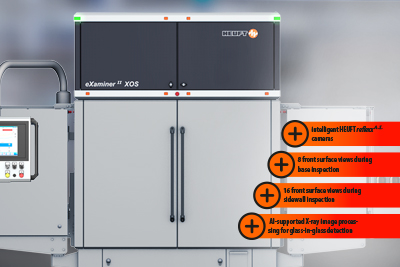Full “Kölsch” enjoyment!
“He drinks Reissdorf, she drinks Reissdorf” – without any regrets from distinctive relief glass bottles which are free from harmful glass splinters. This is because the HEUFT eXaminer II XOS recognises contaminated full bottles at the end of the returnable line in Cologne, where the cathedral city's most popular top-fermented beer is bottled.
Rejection rates of less than 0.6 per cent indicate that glass splinter contamination is a rare occurrence. The exceptionally high accuracy of the glass-in-glass detection with pulsed X-ray technology and intelligent HEUFT reflexx A.I. X-ray image processing is demonstrated by the low proportion of incorrectly rejected foreign body-free Kölsch containers of less than 0.2 per cent. And a reliability of at least 99 per cent in the detection of just 3 x 3 x 2.5 millimetre small splinters of intrinsic glass alone, which – surrounded by liquid – are hidden in the difficult to see ribbed edge area of the bottle base.
This was demonstrated by the test runs during the factory acceptance test by the full product inspector at the Burgbrohl customer centre of HEUFT SYSTEMTECHNIK GMBH as well as during the site acceptance test in Cologne-Rodenkirchen. "And this is also confirmed in daily filling operations”, Mathias Felber, Technical Manager at the private brewery Reissdorf, where the HEUFT eXaminer II XOS was installed in September 2023, exactly one year before its 130th anniversary, is pleased to report. The end-of-line system detects glass in glass with high precision even under difficult environmental conditions, while only the very fewest 0.33 and 0.5-litre long-neck bottles are removed from circulation with the HEUFT DELTA-FW flow diverter without actually being contaminated. ‘This is good for the production quality and also for productivity,’ says Felber. Even high filling capacities of up to 60,000 containers per hour cannot impair the inspection quality.
High detection reliability, low radiation
After filling, each customised Reissdorf bottle with its unmistakable relief design is X-rayed twice. The servo-controlled conveyor belt, which clamps them in place and transports them straight through the linear end-of-line system, rotates them between the two X-ray stations and aligns them so that they can be examined again from a different perspective at the second station. This ensures complete coverage of the entire base area of the returnable containers. Compared to conventional X-ray scanners, the pulsed X-ray technology available exclusively from HEUFT reduces the radiation dose by a factor of 100 – and at the same time prevents motion blurring on the images, which makes it considerably more difficult to reliably detect foreign objects.
This is due to the fact that the HEUFT eXaminer II XOS does not emit a continuous beam but only millisecond X-ray flashes. And only when there is a bottle to be inspected in front of the detection station. Innovations in the generation, conversion and intelligent processing of X-ray images increase the sensitivity of detection. When inspecting 60,000 freshly filled Kölsch bottles in one hour, radiation is only generated for 60 seconds instead of a full 60 minutes. At just ten microsieverts per X-ray flash, the dose is 30 times lower than the amount of natural radioactivity that each person absorbs daily from food alone. On long-haul flights, the exposure is even up to 900 times higher, and almost 200 times higher for a medical X-ray.
Fewer false rejections, more line efficiency
Fullscreen
When analysing the X-ray images, HEUFT reflexx A.I. compensates for fluctuations in the glass thickness at the bottom of the Kölsch bottles and intelligently removes image noise and artefacts from the shots. Real foreign objects and defects can thus be distinguished even more reliably from supposed ones. This also has a positive effect on the false rejection rate: The proportion of uncontaminated full containers that the HEUFT DELTA-FW incorrectly rejects is – as mentioned – less than 0.2 per cent, while the detection performance in the challenging identification of intrinsic glass splinters in the glass bottle reaches almost 100 per cent. ‘These are impressive values that give us a feeling of security,’ confirms the Technical Manager of the successful private brewery.
The conveyor mechanics and conveyor control, which HEUFT also supplied in September last year and integrated between the filler and labeller in order to ensure a harmonious bottle transport and a continuous supply to the guiding and inspection machines, also contribute to effective brand and consumer protection as well as greater line efficiency. The HEUFT synchron II BS controls the bulk transport on the robust HEUFT conveyor belts, separates the flow of bottles before the filler and feeds the Reissdorf containers as quickly as possible without any gaps.
Shortly before they are labelled, the HEUFT eXaminer II XOS uses pulsed X-ray technology and intelligent X-ray image analysis to inspect them so precisely that ‘he’ and ‘she’ can enjoy Kölsch without any foreign bodies from flawless returnable individual bottles. ‘We are correspondingly pleased to have opted for a state-of-the-art X-ray system for full product inspection at the end of the line,’ says Felber. ‘From the initial tests to the project planning, installation and successful commissioning through to the technical support, the same applies to the cooperation with HEUFT as a whole.’
We will be demonstrating the HEUFT eXaminer II XOS live in operation at the HEUFT stand 8-104 at BrauBeviale 2024 in Nuremberg!



